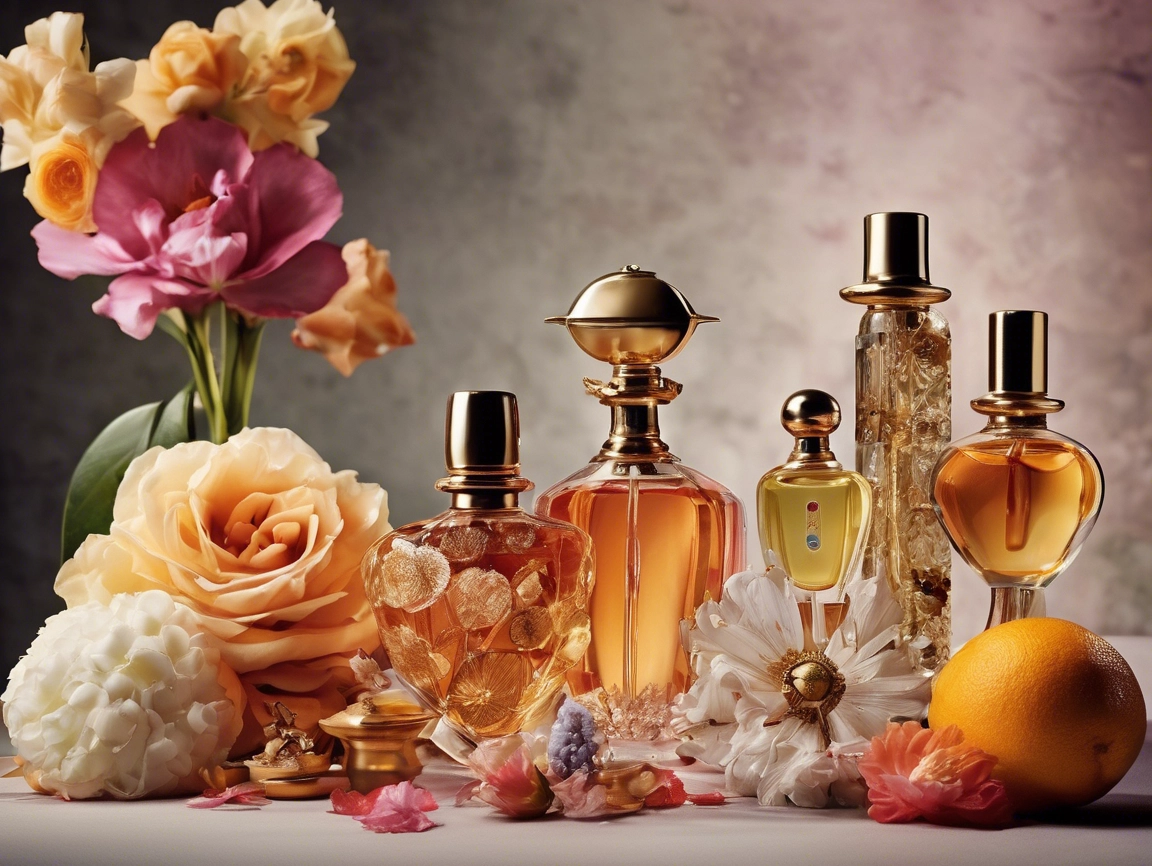Introduction to Perfume Families
Perfume families serve as a fundamental classification system within the fragrance industry, allowing both consumers and perfumers to navigate the vast array of scents available in the market. These families categorize fragrances based on their predominant scent profiles, facilitating a deeper understanding of their compositions and characteristics. By grouping similar scents, perfume families help individuals identify their preferences and make informed choices when selecting perfumes.
Historically, the concept of perfume families dates back centuries. As perfumery evolved, the need for organization became apparent, leading to the establishment of various categories. Initially, classes were primarily based on raw materials, such as floral, woody, and citrus notes. However, as perfumers began to explore complex compositions, the classification system expanded, incorporating broader categories that encompass a variety of scent families, including gourmand, oriental, and fresh.
The importance of these families extends beyond mere categorization; they also reflect cultural and seasonal influences that affect fragrance trends. For instance, warmer and richer scents are often favored during colder months, while lighter and fresher fragrances are preferred in warmer seasons. Understanding these families not only aids consumers in selecting a fragrance that resonates with their style but also enhances the appreciation of the artistry involved in perfume creation. Each family carries its own distinct emotional and psychological impact, making the study of scent profiling integral to mastering the olfactory experience.
As the fragrance industry continues to innovate, the exploration of perfume families remains relevant, providing a framework through which individuals can engage with the complex world of scents. This guide seeks to delve into each family, elucidating their unique characteristics and uses, thereby enriching the reader’s appreciation and understanding of fragrance in everyday life.
The Major Perfume Families Defined
In the world of perfumery, fragrances are categorized into major families, each distinguished by unique characteristics and scent profiles. Understanding these families can greatly enhance one’s ability to choose a fragrance that resonates with personal preferences and occasions. The four primary perfume families include Floral, Oriental, Woody, and Fresh.
The Floral family is perhaps the most diverse and popular category, characterized by a bouquet of flower-derived scents. Common notes in floral fragrances include rose, jasmine, and peony. These perfumes often evoke a sense of romance and femininity, making them well-suited for daytime wear or special occasions. Popular examples include Chanel No. 5 and Lancome’s La Vie Est Belle, both celebrated for their rich floral notes.
Next, the Oriental family offers a more exotic and bold scent experience, characterized by warm and inviting notes such as vanilla, amber, and various resins. Oriental fragrances often weave together spices and sweet undertones, creating a rich tapestry of aromas that tend to be sensual and alluring. Iconic fragrances in this family include Yves Saint Laurent’s Opium and Tom Ford’s Black Orchid, which exemplify the warmth and complexity associated with this category.
The Woody family brings a grounding and earthy element to the fragrance spectrum. Common notes such as sandalwood, cedarwood, and patchouli provide depth and richness, often appealing to those who appreciate a more robust and natural scent. Woody fragrances can be both masculine and unisex. Notable examples include Gucci’s Guilty and Chanel’s Égoïste, which showcase the distinctive qualities of wood-derived aromas.
Finally, the Fresh family embodies lightness and vibrancy, making it a popular choice for casual and everyday wear. Citrus notes such as lemon, bergamot, and lime define this category, often accompanied by green or aquatic nuances. Fragrances like Dolce & Gabbana’s Light Blue and Clinique’s Happy illustrate the refreshing and invigorating essence typical of fresh scents. Understanding these major perfume families not only assists in navigating the vast world of fragrances but also helps individuals express their personality through scent.
Choosing the Right Perfume Family for Different Occasions
Selecting the appropriate perfume family for various occasions can significantly enhance your overall presence. Fragrances are often categorized into distinct families, including floral, oriental, woody, and fresh. Each of these families carries unique characteristics that can express different moods and sentiments, making them suitable for specific scenarios. For instance, floral perfumes, characterized by scents of flowers like jasmine and rose, are often perceived as soft and romantic. Therefore, they are an excellent choice for intimate settings or romantic dates.
On the other hand, oriental fragrances, which encompass warm and spicy notes like amber and vanilla, exude an air of mystery and sophistication. These scents often work well for evening events or formal occasions, where a more pronounced and lasting impression is desired. For daytime wear or casual outings, fresh perfumes, which include citrus and green notes, are popular choices due to their invigorating and uplifting qualities.
When selecting a fragrance, it is advisable to consider the season as well. Lighter scents generally fare better in warmer months, while heavier fragrances typically complement the cooler seasons. Layering scents is a practical approach that can add depth to your fragrance profile. By combining different perfumes from the same family or mixing complementary families, you can create a signature scent unique to your preferences.
Finally, testing fragrances before committing to a purchase is essential. Sample perfumes in-store or request samples online to allow time for the scent to develop on your skin, as fragrances can vary based on individual chemistry. By taking into account the occasion, season, and your personal preferences, you can confidently choose the right perfume family to ensure you make a captivating impression wherever you go.
The Future of Perfume Families and Personalization
As the perfume industry continues to evolve, a significant trend is the rise of niche fragrances, which cater to unique consumer preferences and experiences. Unlike traditional mainstream perfumes, niche scents often explore unconventional notes and compositions, providing a diverse array of options for those seeking to express their individuality. This movement reflects a broader shift in consumer behavior where personalization has become paramount.
Today, individuals are more inclined to seek out fragrances that resonate with their personal stories and lifestyles, rather than opting for one-size-fits-all scents. The personal connection to a fragrance often plays a pivotal role in consumer choice, leading to an increasing demand for bespoke or custom-made perfumes. Many brands are now offering tailored scent experiences, allowing customers to work with fragrance experts to create a perfume that mirrors their distinct taste. This trend signifies a deeper engagement between the consumer and the product, promoting a sense of ownership and authenticity.
Additionally, advancements in technology are dramatically influencing the perfume creation process. Artificial intelligence is now being employed to analyze vast datasets of scent preferences, enabling perfumers to develop innovative profiles that align with evolving consumer desires. Through digital platforms, consumers can also experiment with virtual scent design, simulating the scent profile before committing to a purchase. This blending of technology and creativity is redefining how perfumes are conceptualized and crafted.
Sustainability is another critical factor shaping the future of the perfume industry. As concerns over environmental impact grow, brands are increasingly prioritizing eco-friendly practices, from sourcing ingredients responsibly to utilizing sustainable packaging. This shift not only addresses consumer demand for ethical products but also fosters a connection with the values of a conscientious consumer base.
In conclusion, the future of perfume families is poised for a transformative journey, accentuated by personalization, technological innovations, and a commitment to sustainability. These elements will likely define the landscape of the fragrance industry, ultimately leading to a richer and more meaningful olfactory experience for consumers worldwide.



